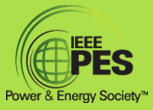| Power
System Analysis,
Computing and Economics
Technologies: Energy
Information Systems (EIS)/Web-Based
Energy Management Systems; software
tools for real-time grid reliability management; price responsive
load; Consortium for
Electric
Reliability Technology Solutions (CERTS)
microgrid; Simulation/Modeling
Tools (Graph Trace Analysis,
GTA, an application - not really a technology).
Technologies:
Energy Information Systems (EIS) have greatly benefited from
Information Technology (IT) developments, cheap communication
equipment, and new reliable wired and wireless communication
technologies. A few new different areas emerged as potential
benefactors of these IT developments. As with the most new scientific
and engineering advances, it is often not very clear who and how can
benefit from the new progress. Demand monitoring and management emerged
as one of the more interesting applications due to potential energy and
cost savings. EIS allow for demand and generation control at different
levels of transmission and distribution systems. Web energy
management is usually associated with remote monitoring and control of
a building or enterprise energy consumption, microgrid is a larger
consumer such as a university campus with generation and or
cogeneration capabilities, and smart grids usually defined at the
distribution system level.
Description: Web
energy management system can handle a single demand or a very large
number of monitored loads. The demand can be either
just
monitored and consumption can be rescheduled based on the collected
data or the communication can be bidirectional and demand controlled in
real time manually or automatically. Microgrids must schedule
both its demand and generation output. Smart grids are often
a
rther confusing approach to energy management. Smart grids
can be
implemented and run by an entity that has nothing to do with energy
generation, distribution, or consumption but connecting and optimizing
the operation of these separate parts of the power system for achieving
some predefined goal. The common, underlying idea is to access
monitoring sensors and control devices remotely over the
internet. The communication media is not important as long as
it
provides sufficient bandwidth and uses standard TCP/IP stack
implementation.
Applications: The
applications derived from these energy approaches are very flexible
since they are computer based. There are a few different
companies marketing web energy management packages. Microgrids
controllers are not as common and the smart grid potentials are still
not quite clear although are estimated to be great.
Benefits: The
main goal of EIS is energy and consumers’ savings, peak load shaving,
delaying distribution system investment into new wires, transmission
system reliability improvements through demand control.
Challenges, Barriers, Gaps: Most
of barriers faced by the EIS are defined by the goals. EIS could also
be used for dynamic control which would require currently unattainable
communication speeds. Today’s communication bandwidths are considered
satisfactory for energy management purposes but there is a big lack of
understanding of how to do it. The simple web energy management and
microgrids operations must be integrated into a bigger picture through
a microgrid implementation if greater savings are to be achieved. There
are currently no satisfactory microgrid control
implementations.
Even if unlimited communication bandwidth, low level demand monitoring
and control are available, it is not clear at all how to take advantage
of all this technology advances. This situation is partly due to gaps
in the regulations. Regulators are aware that there should be demand
control and shifting but they fail to define who should do it and how
they would be compensated for their efforts. Utilities are in the best
position to implement and benefit from these EIS and demand management
but it is not clear if the rest of the industry, including the
customers, would benefit at the same time.
Status, Trends, Installations: Most
of the efforts are currently in local, building or microgrid control
area. There is significant R&D in the area of
microgrid
implementation and even some working sites. A list of
hardware
developers and implementers is given in the references.
Standards Work: No particular work on microgrid standardization to report at
this time.
Potential Impact on Power Engineering: Impact
on the power engineering and power industry is twofold. Usage
of
EIS helps users control their demand at the local scope and will
eventually allow for coordinated control of entire distribution systems
lower the demand when needed. Also, demand control will allow
for
much lower reliability margins and that might not be such a good idea.
References:
Paul
J. Allen, David C. Green “Web Based Energy Information and Control
Systems: Case Studies and Applications”, CRC Press, 2005.
|

